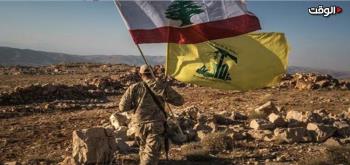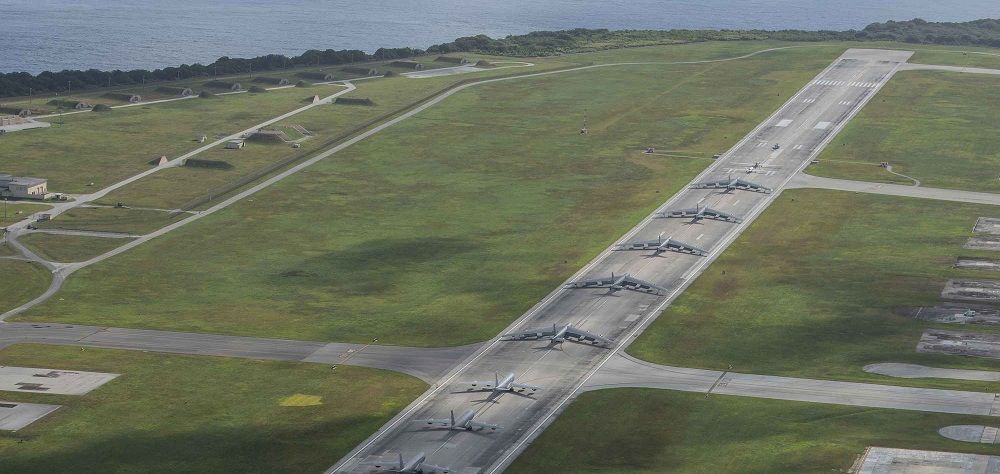Alwaght- US air force has quietly withdrawn all of its bombers from Guam, 16 years after they were deployed to the Pacific Ocean’s island. The White House and Pentagon officials have declined to offer any transparent elaboration on the move and only said that the removal comes as part of a broader strategy with one of its marked traits being unpredictable for the rivals in the sensitive conditions of tensions.
Guam importance for the US
Guam is a strategic island in the Pacific Ocean, located accurately in the south of the Korean Peninsula and east of the Philippines. It is an American territory and home to one of the most significant US military bases. In WWII, it fell to the hands of the Japanese forces but two and a half years later, its control was restored by the American military.
Since 2004 and as part of President George W. Bush's strategy, the US deployed long-range B-52 bombers to Guam. They were operated during the so-called anti-terrorism campaigns and also the Iraq invasion. The US’s main excuse to deploy them a year after the Iraq war was their role in the global campaign against terrorism.
Over the past few decades China transformed into one of the main challenges to US national security. President Donald Trump in his national security document published in 2017 brazenly talked about the policy to contain China. He marked as the main threat to the US security and interests the Chinese and Russian defense doctrines. So, it is believed that the removal of the B-52s from Guam is part of the US defense doctrine that more than any other time sees possible a war with China. After the US national security document was published, the US Undersecretary of State David Helvey said that Washington will continue to fight terrorism but the competition with the big powers will be the center of the American national security focus. So, the fundamental change in the US defense strategy is the prioritization of the preparation for the war, especially with the big powers.
The pullout of the strategic bombers means the change of the US tactic in Asia. With its Anderson military base, Guam remains of high strategic importance for containing the US regional rivals like North Korea and China. US Air Force Major Kate Atanasoff, a US Strategic Command (STRATCOM) spokesperson said: “US strategic bombers will continue to operate in the Indo-Pacific, to include Guam, at the timing and tempo of our choosing.”
Changing the US forces’ makeup in the Korean Peninsula
Over the past two years, Trump with his show summits with the North Korean leader Kim Jong-un and buying time sought to frustrate Pyongyang’s offensive policies. He then exited the Intermediate-Range Nuclear Forces (INF) and formed the US Space Forces as the sixth branch of the US military in a bid to take the initiative in the space and modern wars.
But these moves resulted in the intensification of the tensions in the Korean Peninsula. Last week, the Wall Street Journal, citing Department of State, reported that China might be secretly conducting nuclear tests with very low explosive power despite Beijing’s assertions that it is strictly adhering to an international accord banning all nuclear tests. Also, the US on Friday said that Russia has recently tested an anti-satellite missile system that can destroy satellites from 800 kilometers. The test was conducted from northern Moscow, the report said. Russia has denied it tested such a weapon and blasted the US militarization of the space.
Rand Corporation, an American think tank, in an assessment of the Chinese power published in late February said that showoff of the better performance of China in the military terms can increase the costs, prolong the conflicts, and add to the risks the US is facing.
One of the foundations of the US’s new defense doctrine is the employment of “dynamic forces” to face off the new threatening factors. Under this strategy, the equipment, forces, measure, scale, and method of their deployment is designed flexibly for global competition with China and Russia. This design complements an older military strategy in which Washington tries to be strategically predictable but operationally unpredictable.
According to the air force announcement, the employment of the dynamic forces allows the bombers to use a wider range from outside the country while it keeps them permanently inside the country. The change of the US forces makeup in Guam came as an outcome of a three-month assessment of Russian, Chinese, and North Korean measures.
North Korea’s Jong-un earlier this year said that the domain and depth of North Korea’s nuclear deterrence depend on the US approach to and treatment of Pyongyang.
Last month, Korean newspapers reported the activity of missile carriers in a plant near the Sanum-dong Research and Development Facility near the capital Pyongyang. The facility was the site of the test of the first ICBMs that are capable of reaching the US. Along with disclosing the collapse of the US summits with the North, the measures herald a new season of tensions in the Peninsula and dangerous competition of the big powers. A year ago, China equipped its air force with DF-26 ballistic missile, dubbed “Guam killer.” Following Beijing’s measure, the US deployed its B2 Spirit stealth bombers to a military base in Pearl Harbor, Hawaii.
Taiwan cause
Another area of tensions between China and the US that has been effective in reviewing the US forces' presence in Guam is the Taiwan cause. Since Trump’s assumption of power in 2017, he used Taiwan, which is Beijing’s red line, to threaten Chinese territorial integrity. Three weeks ago, Trump approved a bill, officially dubbed Taiwan Allies International Protection and Enhancement Initiative (Taipei) Act, for increasing supports to Taiwan, rendering strong Chinese reaction. Chinese Foreign Ministry Spokesman Geng Shuang in reaction said that the US should immediately correct its “mistake” and not implement the act because the “legislation blatantly obstructs other sovereignties from developing legitimate diplomatic relations with China.” China will give a firm response, otherwise, the spokesman threatened.
As a concrete response, China last week held its fourth war games within the past two months in the Strait of Taiwan. Experts suggest that Beijing is bracing for a military confrontation in the strait. It was after the war games that the US bombers left Guam base after an air runway parade. Kathleen Atanasoff, an American air force officer, said that the bomber pullout was because of the unpredictability of the possible confrontations.
Graham Allison, an American political scientist and professor at the John F. Kennedy School of Government at Harvard who wrote Destined for War: Can America and China Escape Thucydides’s Trap in his analysis of the status of Chinese-American competition after the coronavirus crisis said that the intensified coronavirus crisis makes Washington-Beijing competition volatile and reveals the two sides’ structural differences.
Commenting on the future of these differences, he said: “The narrowing gap between Washington’s and Beijing’s respective global power and military might does not necessarily mean any war between the two under a Thucydides dynamic would be started by one of them directly, but rather where a third player that lights the spark. So in the current situation, Taiwan is a ticking time bomb.”
Trump, however, prioritizes economic war over military confrontation with the rivals. Still, his policies over the past three years have drawn the US closer to military confrontation in East Asia.



























